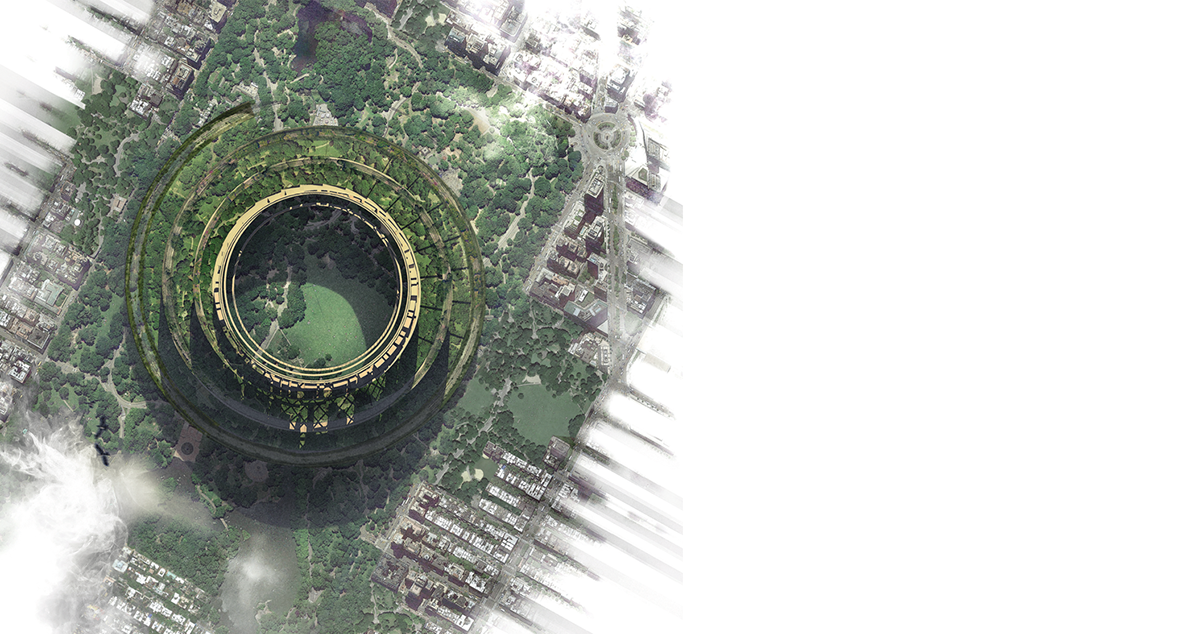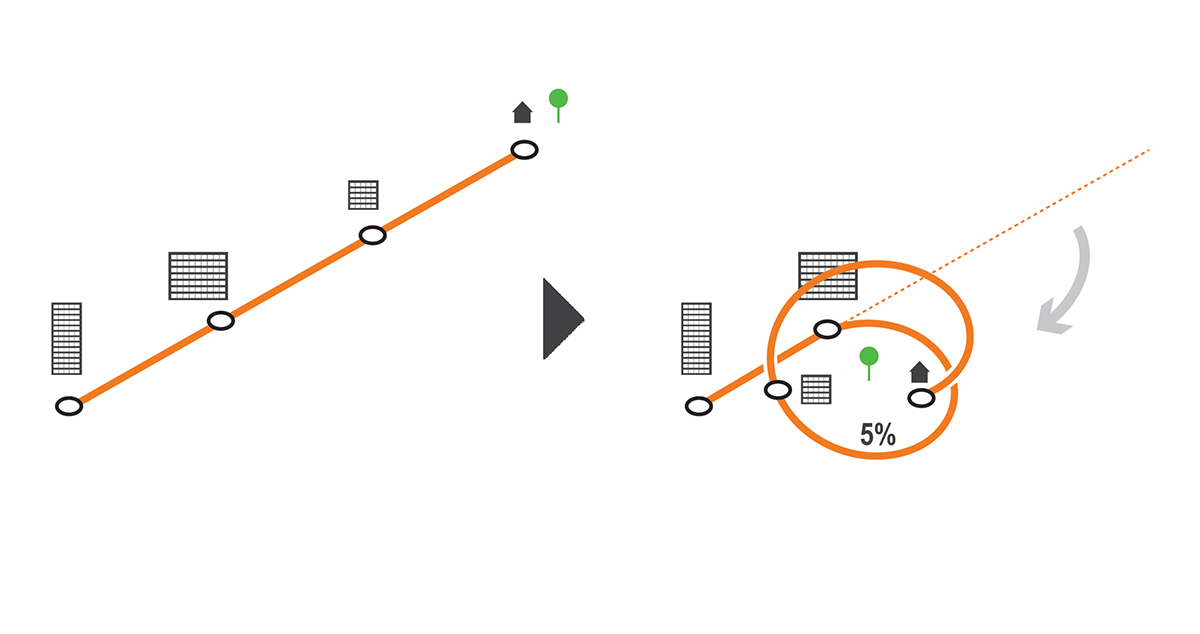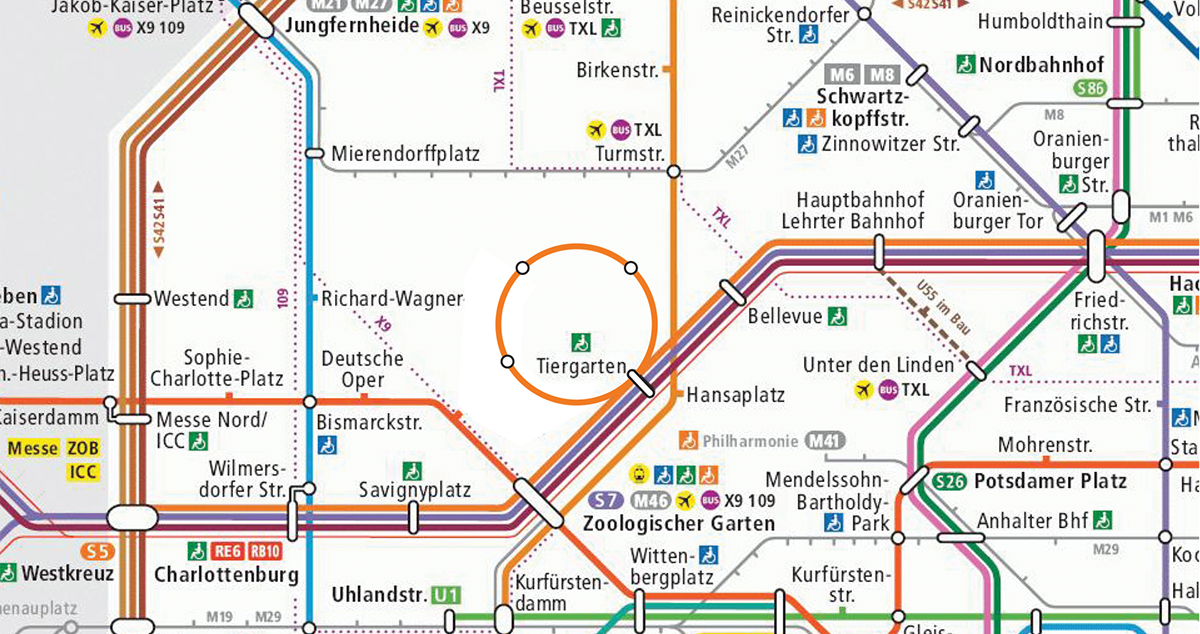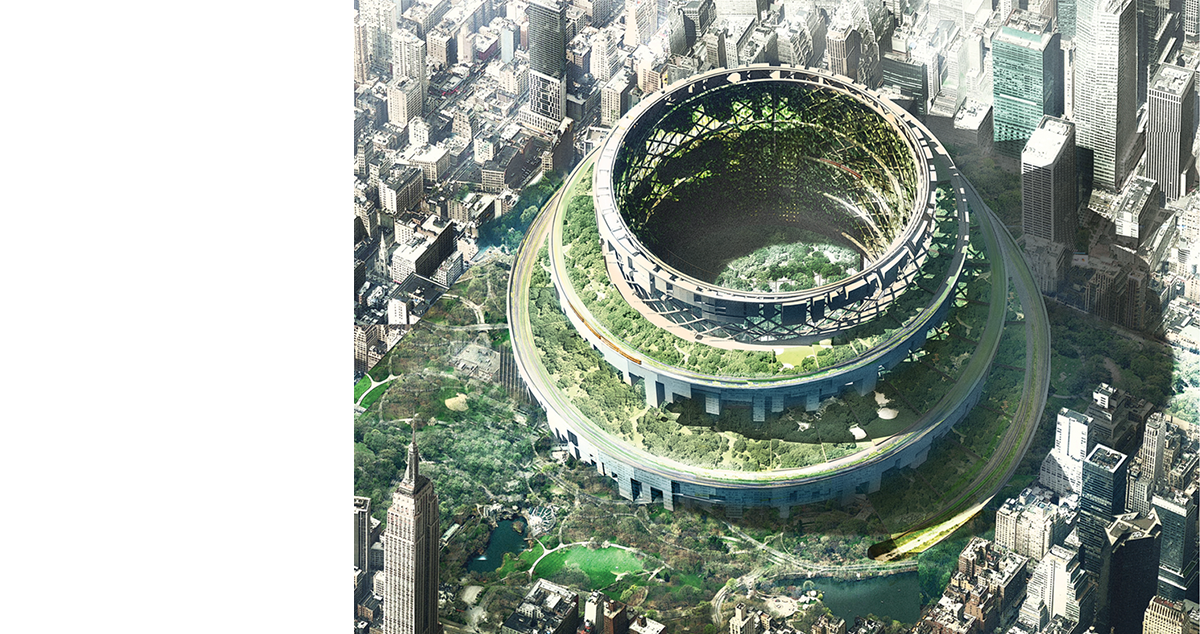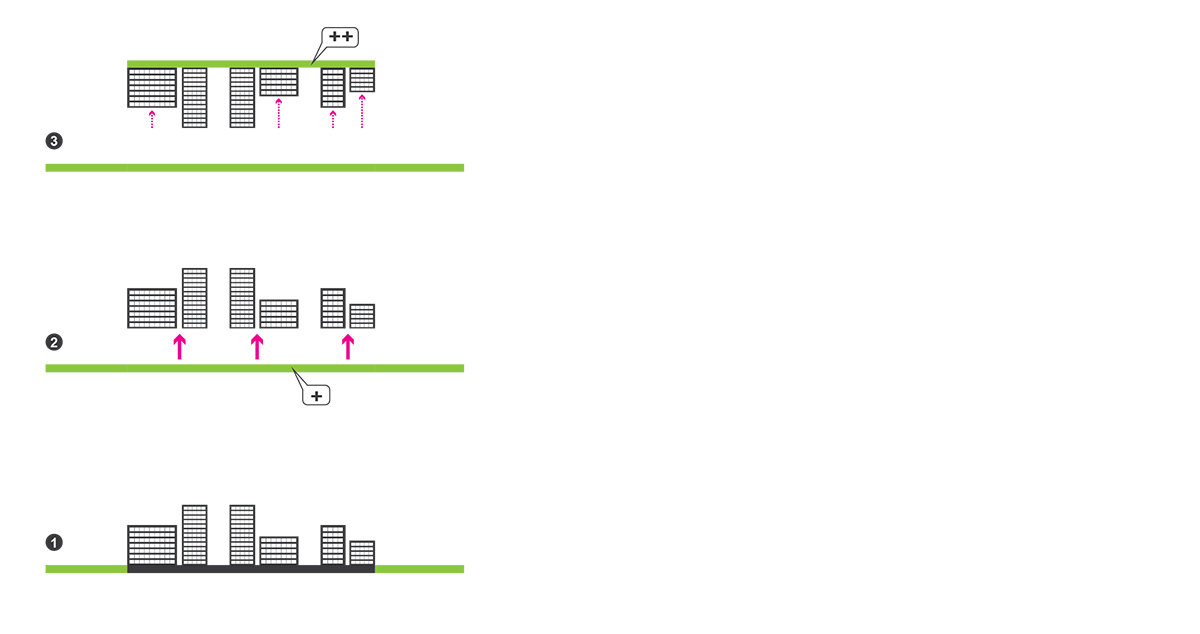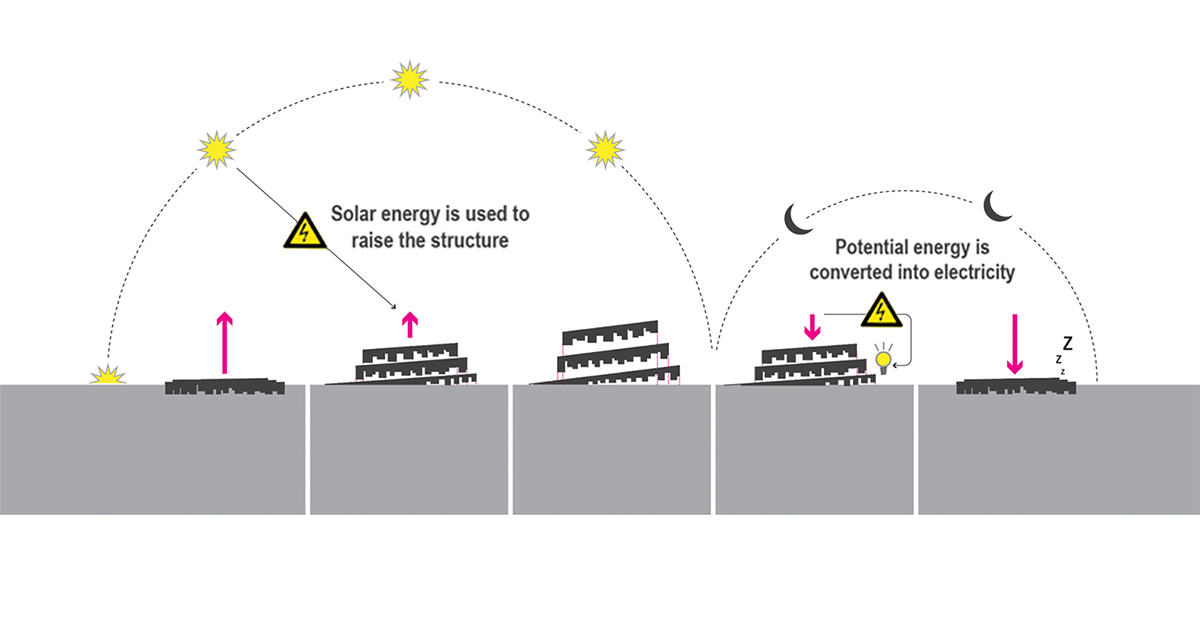Babel Town
Babel Town is a theoretical experiment to provoke new thinking about
the way we design our future cities, a concept that radically transforms
the city as we know it.
According to the Old Testament, the failure to construct the Tower of Babel was due to god’s punishment: the multiplication of languages. In today’s Urban Age there is the common language of sustainability in urban design. Compression and vertical densification seem to be the answers to the massive urban growth we experience in the 21st century.
Contrary to a traditional, concrete filled city center with suburbs and green space that surround it, Babel Town is inverted, containing a green heart surrounded by its built environment. The structure is designed as a vertical spiral reaching around 300m in height, with a 5% grade to enable metro trains to circulate through the structure. Linear horizontal distances are compressed and the hazard of urban sprawl is reduced by activating the z-axis. This results in the inversion of the traditional city section. Buildings that used to be grounded and occupy valuable green space, are now hanging beneath the structure, allowing the sloping green space to become a continuous belt uniting Babel Town. By aligning the buildings along their roofscape, green space is generated instead of consumed.
According to the Old Testament, the failure to construct the Tower of Babel was due to god’s punishment: the multiplication of languages. In today’s Urban Age there is the common language of sustainability in urban design. Compression and vertical densification seem to be the answers to the massive urban growth we experience in the 21st century.
Contrary to a traditional, concrete filled city center with suburbs and green space that surround it, Babel Town is inverted, containing a green heart surrounded by its built environment. The structure is designed as a vertical spiral reaching around 300m in height, with a 5% grade to enable metro trains to circulate through the structure. Linear horizontal distances are compressed and the hazard of urban sprawl is reduced by activating the z-axis. This results in the inversion of the traditional city section. Buildings that used to be grounded and occupy valuable green space, are now hanging beneath the structure, allowing the sloping green space to become a continuous belt uniting Babel Town. By aligning the buildings along their roofscape, green space is generated instead of consumed.
Type: Concept
Year: 2012
Year: 2012

